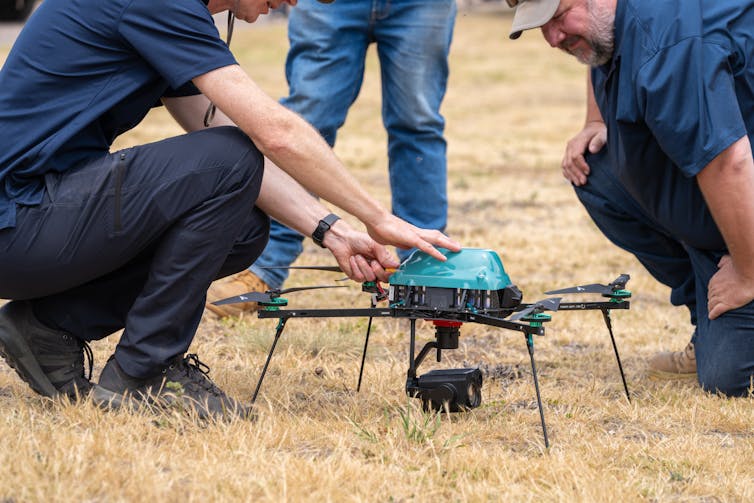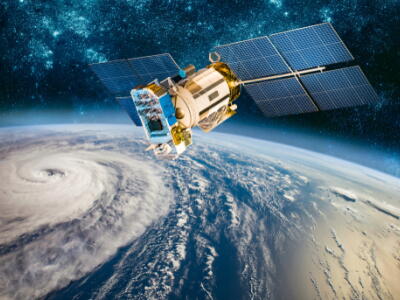By Marta Yebra, Professor of Environmental Engineering, ANU; Iain Guilliard, Research Fellow, School of Engineering, ANU; Nicholas Wilson, Research Fellow, Fenner School of Environment and Society, ANU, and Robert Mahony, Professor of System Theory and Robotics, ANU.
Picture this. It’s a summer evening in Australia. A dry lightning storm is about to sweep across remote, tinder-dry bushland. The next day is forecast to be hot and windy. A lightning strike tonight could spark a fire that grows into a catastrophic blaze tomorrow.
Fire authorities deploy drones to chase the storm. The drones detect spots where lightning strikes have ignited the bush – perhaps smouldering tree roots, or smoke pouring from a tree hollow. The drones stay aloft throughout the night, identifying new ignitions and monitoring those that progress to small fires.
Larger drones are dispatched through the night. They drop retardant on the burning bush to slow the flames. The small drones continue to supply data to human fire crews. By dawn, the crews are armed with precise information and ready to act. They suppress the small fires in the early morning, before the winds arrive. What could have turned into a raging megablaze is confined to a few hectares.
This is not science fiction. It is a feasible vision for using drone technology to manage bushfires in Australia, outlined in the federal government’s recent roadmap, which we authored.
So let’s take a look at how drones can help Australia fight bushfires, and the obstacles to be overcome before it becomes reality.




